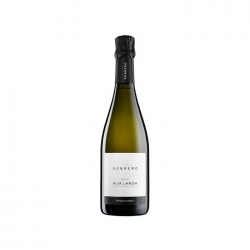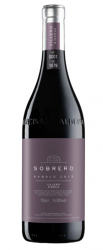Wines
Nebbiolo Langhe doc
Sensory description: purplish ruby with garnet highlights. Lively, crisp varietal expression on the nose, with redcurrant and raspberry in the lead, enriched with subtle notes of clove, nutmeg, and black pepper, concluding with nuances of liquorice and tar. A tangy vein of slaty mineral is the final tessera in an aromatic mosaic of great finesse. The palate, rich and heady, offers an ambitious dynamic of succulent, chewy fruit, firm tannins, and bright acidity, concluding with a lengthy, ultra-savoury finish that brings final balance to a delicious Nebbiolo. Serving suggestions: Meat and light game dishes, such as roasts, stews, grills and barbecues.
| Commune of origin: | Castiglione Falletto. |
| Grape variety: | 100% Nebbiolo. |
| First year of production: | 2001 |
| Annual production: | 20.000 bottles. |
| Vineyard area: | 3 hectare |
| Altitude: | 340 metres |
| Soil profile: | Clayey. |
| Training method and vine density: | Vertical Guyot, at 5.500 vines per hectare. |
| Average age of producing vineyards: | Average age of producing vineyards: |
| Average age of producing vineyards: | 80 quintals |
| Fermentation and maturation: | 25-day controlled-temperature (27-28°C) fermentation in steel, followed by drawing-off, racking after 10 days, and malolactic fermentation in steel. 12 months’ maturation in 25 and 50 hl oak botti. |

Francesco Sobrero
Passion, love and tradition. An increasing passion, a love that continues to grow stronger, and a great tradition closely tied to the land and the territory. Three words, three “creeds,” that merge and exist for one purpose only: excellence in wine. Since the 1940’s and the efforts of the grandfather Francesco, the vital breath of the Sobrero Winery continues to be reinforced. From the 1960’s with Settimo and Pier Franco, and Flavio since 2000, the winery has experienced years of continuous growth: from the sale of bulk to bottled wine, from the purchase of new vineyards to the expansion into export markets. The wines produced by the Sobrero family are a constantly ascending parabola, a symbol of the modernity that crosses time without erasing its foundation, the tradition that accompanies the work in the vineyard and the cellar, step after step.

Piemonte
From Asti Spumante to Barolo, the wines of Piedmont are among Italy’s most prolific and best rated. The region’s pedigree is apparent in its 58 DOC and DOCG zones, and although it is only the sixth largest producer in terms of volume, it has the highest percentage of classified wines in all of Italy. No IGT wine area is identified. This westerly region that borders with Switzerland and France is influenced by the Alps and Apennines (the name Piedmont means "foot of the mountain") and its seasons are very distinctive. Hot, dry summers, cold winters, and temperate springs and autumns are common with occasional fog during harvest time.
Undoubtedly it is the red wines that lead the way in terms of quality and cellaring potential with wines made from the noble Nebbiolo grape. The DOCGs of Barolo, Barbaresco, Gattinara, Ghemme and Roero all represent the grape at its finest: they are complex, alluring wines with extraordinary depth and great ageing potential. Barolo ("king of wines and wine of kings") is made in the Langhe hills with its output of 6 million bottles a year far exceeding that of Barbaresco at less than 2.5 million.

Related Wines

Barbera d'Alba Selectio doc
A brilliant purple- edged ruby of marked depth and intensity
View info
Barolo - 'Chinato'
A lively, sparkling cherry-ruby in appearance.
View info
Barolo Ciabot Tanasio docg
A strikingly brilliant ruby in appearance, very luminous.
View info
Chardonnay Langhe Bianco VII doc
In appearance, a striking gold-tinged straw yellow, radiant
View info
Barolo Riserva Parussi docg 2012
A luminous, lively ruby in appearance.
View info
Sparkling - Alta Langa N.V.
Alta Langa
View info
Barolo Riserva Pernanno docg 2003
a luminous, lively ruby in appearance.
View info
Barolo Riserva Villero docg 2015
Bright, intense garnet red with a pale rim.
View info